Imagine a world free from wars, violence, and weapons. You'd see communities thriving without the shadows of conflict. Peace would foster economic growth, lifting millions out of poverty. With harmonized societies, more people would attend school and pursue dreams without fear. You'll witness enhanced mental well-being, as trauma decreases and hope rises. Global cooperation could flourish, focusing on shared goals like sustainability and social justice. By promoting understanding and respect, we can build a foundation for lasting peace. If you explore deeper, you'll uncover innovative strategies and movements pushing us closer to this vision of a harmonious existence.
Essential Insights
- A world without wars requires global cooperation on disarmament and adherence to treaties like the NPT and Arms Trade Treaty to reduce weapon proliferation.
- Promoting social justice, gender equality, and economic equity can help mitigate the underlying tensions that lead to violence and conflict.
- Grassroots peacebuilding initiatives foster community engagement and mutual respect, crucial for preventing conflicts before they escalate.
- Incorporating technology, such as AI and predictive analytics, can enhance conflict prevention and improve safety in communities.
- Emphasizing education on global citizenship and empathy through Sustainable Development Goals can cultivate a culture of peace and understanding.
Historical Context of Conflicts
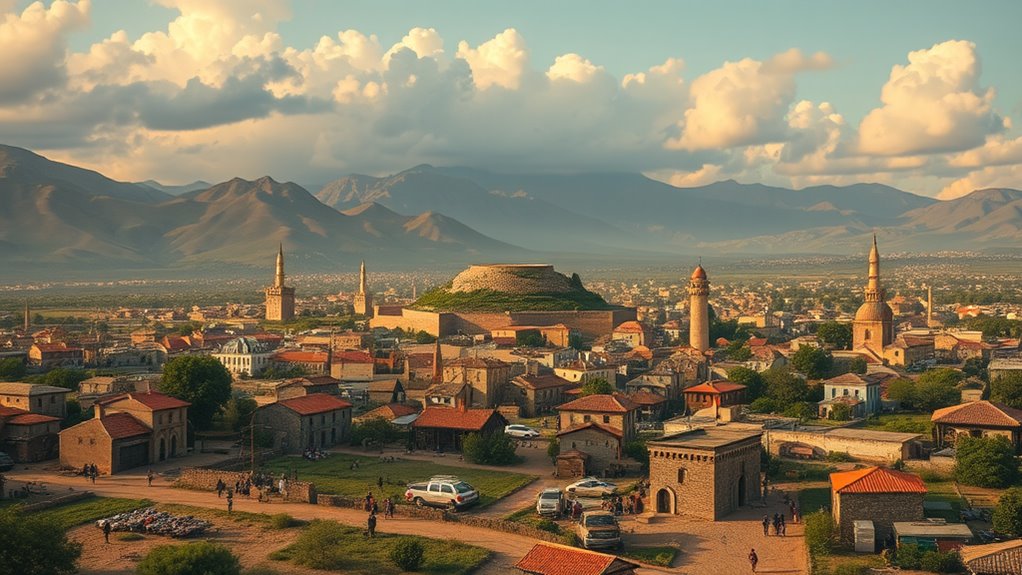
Understanding the historical context of conflicts is crucial for grasping how global tensions have evolved over time. The aftermath of World Wars I and II drastically weakened European powers, making it increasingly difficult for them to maintain control over their colonial territories. As these nations faced economic dependencies and military alliances crumbling, independence movements surged in Asia and Africa, fueled by nationalist aspirations. The rise of the United States and Soviet Russia as superpowers post-World War II reshaped global power dynamics. The Cold War that followed divided the world into opposing camps, with the US supporting European integration in the West while the USSR solidified its grip on Eastern Europe. This division not only reflected the superpower dynamics but also accelerated the collapse of colonial empires.
Decolonization movements emerged as colonized nations sought autonomy, employing various tactics, from political lobbying to armed resistance. The colonial legacies left by European powers complicated these changes, as newly formed nations grappled with their identities and governance. World War II's impact on colonial territories contributed significantly to the urgency of these movements.
The global power shifts during this era resulted in new geopolitical landscapes, as former colonies became independent states. Post-war reconstruction efforts were essential for stabilizing regions affected by conflict. The reckoning with historical injustices and the need for truth and reconciliation also became critical in establishing lasting peace.
Ultimately, understanding these historical contexts allows you to see the connections between past conflicts and current global challenges.
Understanding Global Violence Trends
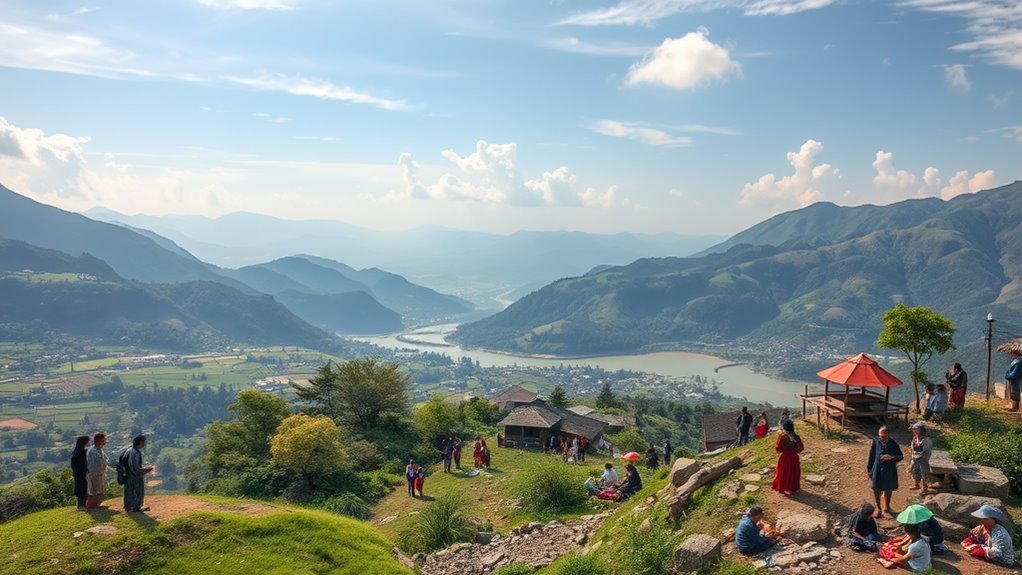
Analyzing global violence trends reveals alarming patterns that highlight the increasing instability in various regions. In 2024, 97 countries reported a deterioration in peacefulness, the most notable decline since the Global Peace Index began in 2008.
With 56 active conflicts worldwide—the highest since World War II—it's clear that root causes of violence are deepening. You might consider three critical factors fueling these violence cycles:
- Economic Disparities: Growing inequality exacerbates tensions within and between countries, leading to violent conflicts over resources.
- Geopolitical Conflicts: The ongoing struggles in Gaza and Ukraine have contributed greatly to global instability, resulting in 162,000 battle deaths in 2023. In fact, the conflicts in Ukraine and Gaza have been identified as primary drivers of violence globally.
- Militarization: The rise in militarization marks the largest yearly deterioration in peace, with 108 countries becoming more militarized.
The social impact of these trends is staggering. Over 110 million people are now refugees or internally displaced due to violence, while many others face violence outside conflict zones.
The economic toll of violence reached $19.1 trillion in 2023, accounting for 13.5% of global GDP. This economic burden not only hinders recovery efforts but also fuels a cycle of despair and conflict.
As you reflect on these trends, it's important to grasp how interconnected these factors are. Understanding these complexities can help pave the way towards addressing the root causes and breaking the cycles of violence that plague our world today.
Strategies for Peaceful Societies
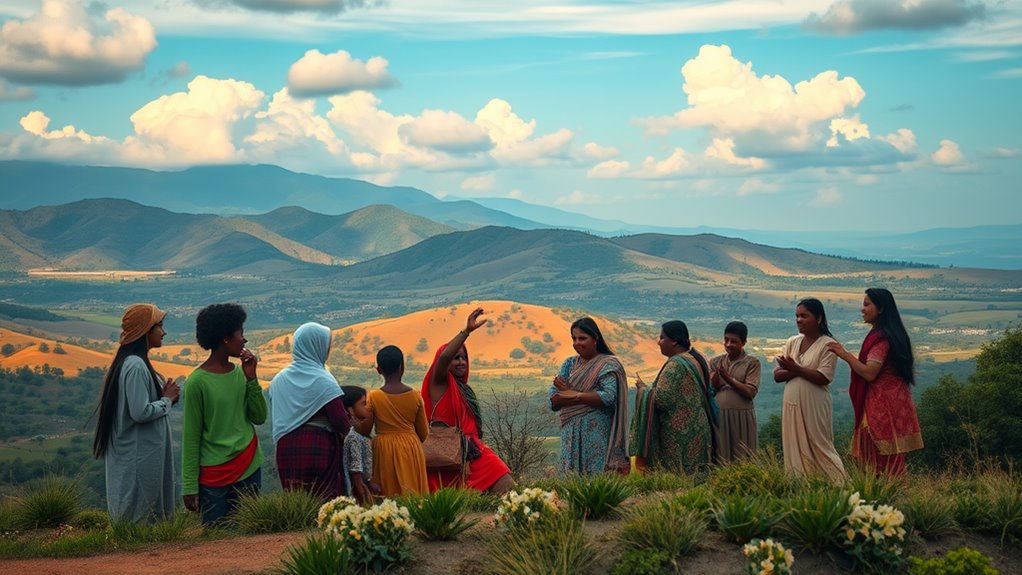
Creating peaceful societies requires intentional strategies that foster harmony and understanding among individuals and communities. You can start by promoting interpersonal harmony, where mutual respect and toleration for individual differences are paramount. This involves devaluing conflicts and minimizing their impact, ensuring that disagreements don't escalate into violence.
Emphasizing values-based peacebuilding is essential, too. By focusing on universal principles and shared values, you can address underlying conflicts and encourage equitable, sustainable development. Engaging all members of your community in peacebuilding efforts through grassroots initiatives can make a significant difference. Notably, nonviolent societies illustrate how communities can thrive with minimal internal violence and external warfare.
Collaboration with both public and private sector partners in various areas can lead to impactful projects in education and entrepreneurship.
Conflict resolution methods like negotiation and mediation play fundamental roles in maintaining peace. When you encourage direct communication and involve neutral facilitators, you help disputants reach consensus while focusing on their underlying interests. Arbitration and litigation can serve as last resorts, but they should be approached with caution.
Moreover, organizational contributions to peace, such as those from the Fellowship of Reconciliation and the Women's International League for Peace and Freedom, provide valuable frameworks. They advocate for nonviolent alternatives and support community organizations.
Disarmament and Non-Proliferation Efforts

Peaceful societies thrive on the principles of cooperation and understanding, but achieving this vision often hinges on disarmament and non-proliferation efforts. Key nuclear treaties, like the Nuclear Non-Proliferation Treaty (NPT) and the Treaty on the Prohibition of Nuclear Weapons (TPNW), lay the groundwork for global cooperation. The NPT, established in 1968, aims to prevent nuclear weapon spread and promote peaceful nuclear energy, which is crucial for global security.
However, several challenges hinder progress:
- Verification Challenges: Ensuring compliance with non-proliferation agreements is essential. Mechanisms like the International Atomic Energy Agency (IAEA) safeguards and the Extensive Nuclear-Test-Ban Treaty Organization (CTBTO) monitor states, but trust issues persist.
- Inertia in Disarmament Initiatives: The Conference on Disarmament has seen limited achievements for over two decades. States often make promises but fail to implement significant changes, undermining security assurances.
- Economic Costs: The financial burden of maintaining nuclear arsenals diverts resources from essential human needs, calling for reassessment of priorities.
To foster disarmament, it's vital to strengthen compliance mechanisms and enhance transparency in arms control.
Initiatives such as the Non-Proliferation and Disarmament Initiative (NPDI) aim to bridge the gap between commitments and actions. Emphasizing a human security perspective, you can advocate for a world prioritizing safety over weaponry.
Role of UN Peacekeeping Missions
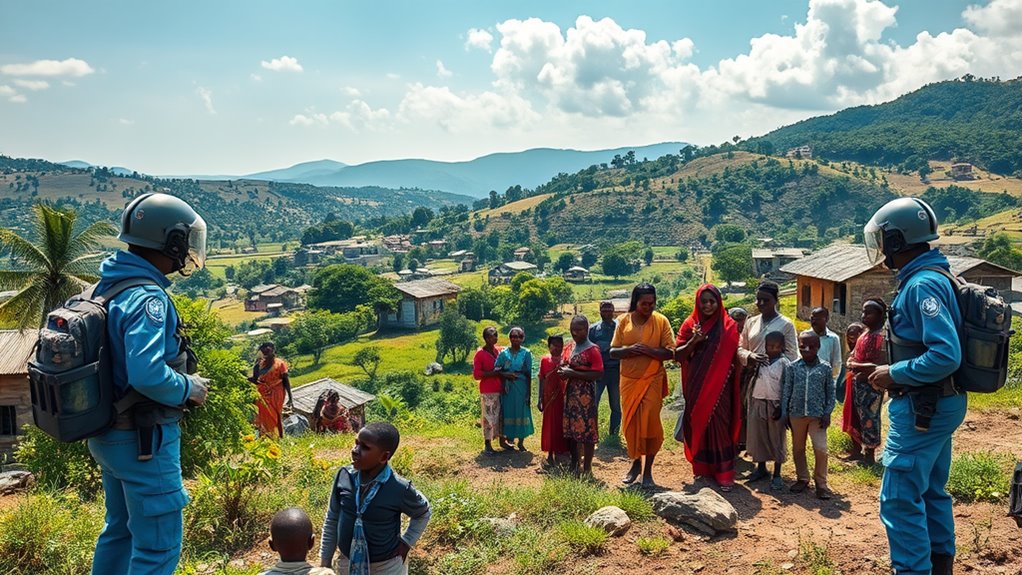
UN peacekeeping missions stand as essential instruments for maintaining global stability and protecting civilian lives in conflict zones. You mightn't realize just how impactful these missions can be; they considerably reduce civilian casualties and shorten conflicts. Since 1948, peacekeepers have spared millions of lives, effectively resolving civil wars and preventing violence from reoccurring. Their presence helps make peace agreements stick, leading to successful implementation in about two-thirds of cases since the Cold War ended.
However, peacekeeping effectiveness isn't without its challenges. The changing nature of armed conflicts, such as the rise of terrorist tactics and organized crime, complicates mission objectives. Peacekeepers often find themselves under threat, facing frequent attacks that hinder their operations. Many missions are deployed in contexts with weak political agreements, which creates obstacles to maintaining peace. Additionally, broad and complex mandates require well-structured forces, and restrictions on movement can impede their ability to protect civilians and investigate human rights violations. Despite these mission challenges, peacekeepers play an essential role in facilitating political processes, disarming former combatants, and supporting democratic efforts like organizing elections and monitoring human rights violations.
Their work in conflict prevention and post-conflict peacebuilding is crucial for fostering long-term stability. As you can see, UN peacekeeping missions remain a fundamental aspect of global efforts to create a world without wars, violence, and weapons. Current roles include maintaining peace, facilitating political processes, and protecting civilians.
Economic Benefits of Peace
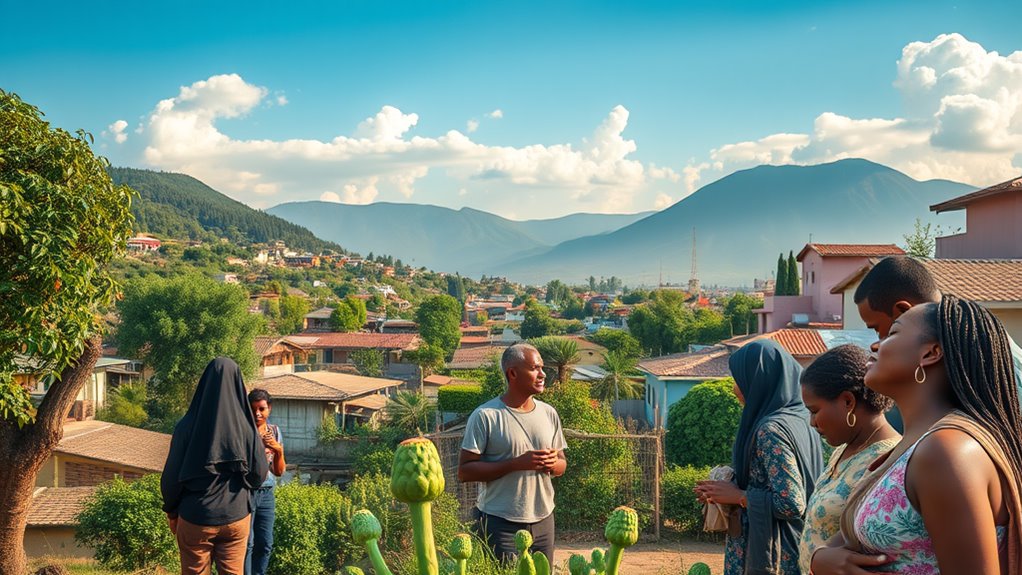
The presence of peace not only helps resolve conflicts but also opens up significant economic potential. When societies embrace tranquility, they reveal pathways to economic prosperity that can transform communities and nations alike.
Here's how peace drives economic benefits:
- Investment Growth: Peaceful environments restore investor confidence, leading to increased foreign investment and trade expansion. With reduced military expenditures, resources can be redirected toward infrastructure development and innovation. This transition is essential as economic interdependence fosters cooperation and deters armed conflict.
- Job Creation: As industries like tourism and retail thrive in peaceful regions, job creation flourishes. Tourism development not only boosts local economies but also enhances cultural exchange and social cohesion.
- Healthcare and Education Improvements: A peaceful society allows for healthcare improvements and educational advancements. Greater income growth and stronger currencies contribute to better public health outcomes and increased literacy rates, fostering a more skilled workforce.
By reducing military expenditures, nations can allocate funds to build their infrastructure, leading to a cycle of economic stability and growth.
The ripple effects of peace create a landscape where trade relationships flourish, driving mutual benefits and harmony.
In essence, the economic benefits of peace are profound. They span investment growth, job creation, and advancements in healthcare and education.
As you can see, a world without wars not only curtails violence but lays the foundation for sustainable economic development, ensuring a brighter future for all.
Community Impact of Reduced Violence
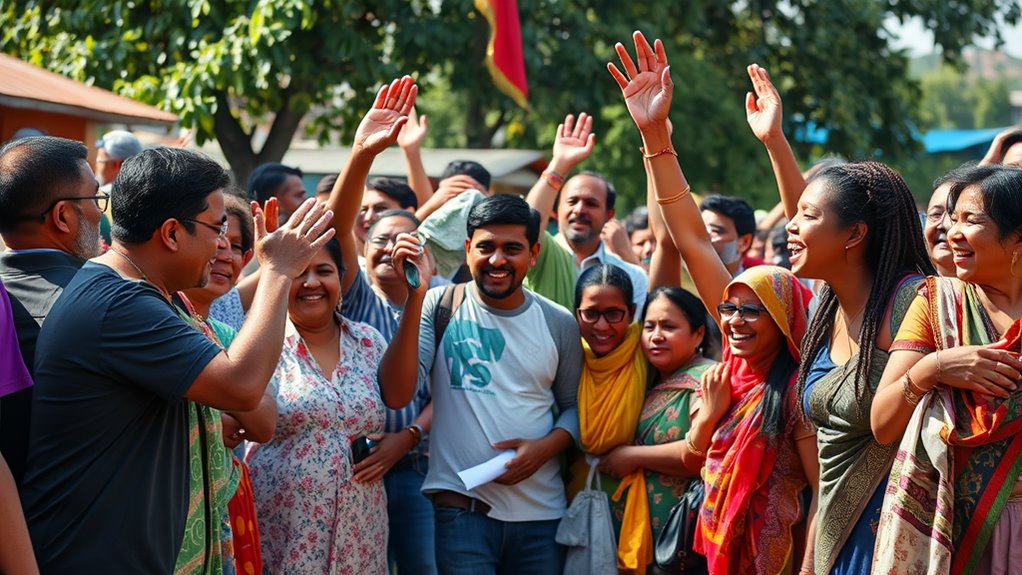
A considerable reduction in violence transforms communities, fostering an environment where individuals feel safe and connected. When violence decreases, you'll notice a surge in community engagement, where residents actively participate in peaceful initiatives aimed at violence prevention.
Nonprofit effectiveness plays an essential role in this transformation, as organizations dedicated to crime reduction create programs that directly address the roots of violence. These nonprofits help build social cohesion by facilitating connections among diverse groups, enhancing community trust.
For instance, initiatives like the Harlem Children's Zone demonstrate how structured programs can greatly lower children's involvement in crime, leading to a more harmonious society. As social ties strengthen, informal social control emerges, empowering residents to regulate behavior and maintain safety.
Moreover, the relationship between economic justice and reduced violence can't be overlooked. When communities invest in financial stability and equitable opportunities, they establish an environment where individuals can thrive.
This economic security allows people to focus on personal and communal growth rather than resorting to violence.
Innovations in Violence Reduction

Innovations in violence reduction are transforming how communities approach safety and security, making them more proactive and efficient. With the integration of advanced technologies and community engagement, you can see a shift toward effective violence prevention strategies.
Here are three key innovations making an impact:
- Surveillance Technology: High-definition cameras and facial recognition software allow for continuous monitoring of public spaces. Motion sensors detect unusual activities and alert security personnel in real time, enhancing overall safety.
- Predictive Analytics: By leveraging historical data, predictive analytics tools help anticipate potential incidents. This involves analyzing communication trends and even using satellite imagery to inform threat assessments. Early-warning mechanisms like SAGE aid in proactive measures.
- Behavioral Monitoring: Behavioral analysis software is used to observe changes in employee behavior, identifying signs of distress or agitation. Digital reporting systems enable anonymous concerns, allowing communities to detect and address potential violence hotspots.
Collaborative initiatives also play a significant role. When law enforcement agencies coordinate with neighborhood organizations and civilian groups, they foster a united front against violence.
These multi-agency efforts not only bolster community engagement but also enhance the effectiveness of violence prevention measures. By embracing these innovations, you can contribute to creating safer environments and a more peaceful society.
Vision for a Peaceful Future

Communities are increasingly recognizing the need for a sustainable vision of peace that extends beyond mere violence reduction. This vision incorporates sustainable development and emphasizes the importance of grassroots movements in fostering lasting change.
Organizations like Mayors for Peace and the World Peace Council are leading the charge, promoting peacebuilding initiatives and disarmament efforts that empower local communities.
You can play a crucial role in this transformation by engaging with grassroots movements that advocate for social justice and gender equality. For instance, the Women's International League for Peace and Freedom harnesses non-violent means to address systemic issues while ensuring that everyone's voice is heard.
By supporting these initiatives, you contribute to a broader movement for a peaceful future.
Conflict resolution strategies are essential components of this vision. By focusing on mediation and negotiation, communities can address underlying issues and emotions that fuel conflict.
Recognizing the importance of objective criteria in evaluating solutions allows for collaborative approaches that bring parties together rather than driving them apart.
As you participate in these efforts, remember the impact of collective action. Each small step towards promoting peace and cooperation in your community can ripple outward, influencing broader societal change.
By championing sustainable practices and supporting grassroots movements, you're not just envisioning a peaceful future; you're actively creating it.
Together, we can foster environments where violence becomes a relic of the past, paving the way for a harmonious world.
Frequently Asked Questions
How Do Cultural Factors Influence the Prevalence of Violence Globally?
Cultural norms clash with historical context, revealing how economic disparities shape violence globally.
You see, religious beliefs and gender roles often dictate societal expectations, influencing behaviors. Media portrayals can either escalate tensions or promote empathy.
In this mix, conflict resolution methods vary widely, reflecting deep-rooted cultural values.
What Psychological Effects Does Violence Have on Communities and Individuals?
Violence deeply impacts your mental health, often leading to trauma recovery challenges.
You might face societal stigma that complicates emotional healing. Victims need support to foster community resilience, enabling better conflict resolution and restorative justice measures.
The psychological effects can manifest as anxiety, depression, or PTSD, hindering your ability to thrive.
It's crucial to prioritize mental health and develop supportive networks that promote healing and resilience for individuals and communities alike.
How Can Education Contribute to Reducing Violence in Society?
Imagine a world where classrooms are conflict-free zones, overflowing with kindness and understanding!
Education can be your secret weapon against violence. By integrating conflict resolution and empathy training into the curriculum, you empower students to handle disagreements peacefully.
When schools prioritize these skills, they create supportive environments that foster strong relationships.
You'll see a ripple effect in society, as students become compassionate leaders, ready to break the cycle of violence and build a brighter future.
What Role Do Social Media and Technology Play in Modern Conflicts?
Social media and technology shape modern conflicts considerably. You witness digital diplomacy in action as nations leverage platforms to communicate and negotiate.
Virtual activism allows you to mobilize quickly, transforming personal grievances into collective movements. However, it can also amplify misinformation, polarizing communities and fueling tensions.
As you engage online, remember that while these tools can foster positive change, they can equally escalate conflicts if misused, affecting how you perceive and react to global issues.
How Do Grassroots Movements Impact Disarmament and Peace Initiatives?
Grassroots movements ignite change by rallying communities, fostering dialogue, and pushing for policy reform.
Through grassroots activism, you connect with others who share similar values, amplifying your voice in disarmament and peace initiatives.
Community engagement creates a powerful network, uniting diverse groups to advocate for nuclear disarmament.
As these movements grow, they challenge existing narratives, influence political decisions, and highlight the importance of collaboration in achieving a more peaceful world.
